NIL
Cowgirl Softball earns NCAA Tournament bid and travels to Arkansas for Fayetteville Regional
STILLWATER – The Oklahoma State Softball team will be making its ninth consecutive appearance in the NCAA Tournament, as was announced via the NCAA Selection Show on Sunday evening. The Cowgirls will be competing in the Fayetteville regional this weekend, along with the No. 4 national seed Arkansas, Indiana and Saint Louis. The action starts […]
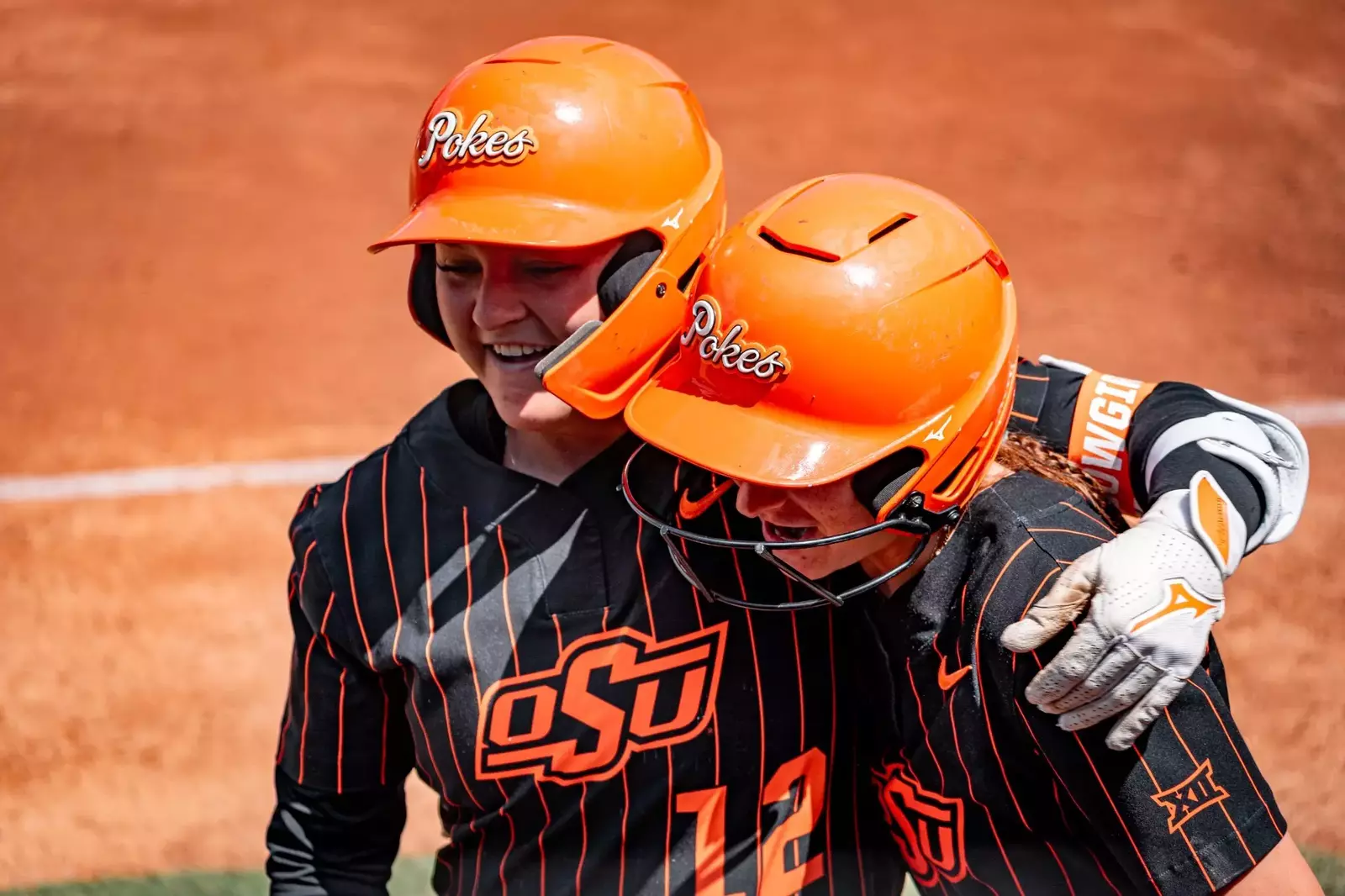
The Cowgirls will be competing in the Fayetteville regional this weekend, along with the No. 4 national seed Arkansas, Indiana and Saint Louis. The action starts Friday at 3 p.m. CT with the Pokes opening play against Indiana on ESPN2, followed by No. 4 Arkansas against Saint Louis at 5:30 p.m. CT.
Should OSU advance through the regional, then the Cowgirls would be matched up with the winner of the Tucson regional that includes No. 13 Arizona, Ole Miss, Grand Canyon and Santa Clara.
The full schedule for the Fayetteville Regional is below.
Friday, May 16
Game 1 – 3 p.m. CT – Indiana vs. Oklahoma State (ESPN2)
Game 2 – 5:30 p.m. CT – Saint Louis vs. No. 4 Arkansas (ESPN+)
Saturday, May 17
Game 3 – Noon CT – Winner of Game 1 vs. Winner of Game 2 (TBD)
Game 4 – 2:30 p.m. CT – Loser of Game 1 vs. Loser of Game 2 (TBD)
Game 5 – 5 p.m. CT – Loser of Game 3 vs. Winner of Game 4 (TBD)
Sunday, May 18
Game 6 – 3 p.m. CT – Winner of Game 3 vs. Winner of Game 5 (TBD)
Game 7 (if necessary) – 5:30 p.m. CT – Winner of Game 6 vs. Loser of Game 6
This marks OSU’s ninth consecutive trip to the NCAA Softball Championship, and its 26th appearance all time. Nine consecutive trips to the NCAA Tournament is the second-longest streak in program history, trailing only the record mark of 11 set from 1988-98.
Entering the NCAA tournament, the Cowgirls are 33-18 and ended the regular season with wins in six of their last seven contests. Six different Oklahoma State student-athletes collected All-Big 12 recognition, led by Rosie Davis, Amanda Hasler and Ruby Meylan all being named to the first team.
For season-long coverage of Oklahoma State Softball, visit okstate.com and follow @CowgirlSB on X and @osusoftball on Instagram.
NIL
Unintended Consequences: NIL Money Is Gutting Euroleagues
You guys probably recall the surprise when we all learned just how much Cooper Flagg made this past season at Duke, around $28 million. He’s an outlier of course, but the trend is unmistakable: income is going up across the board. That’s a bit of problem and not just for the NCAA. Turns out it’s […]
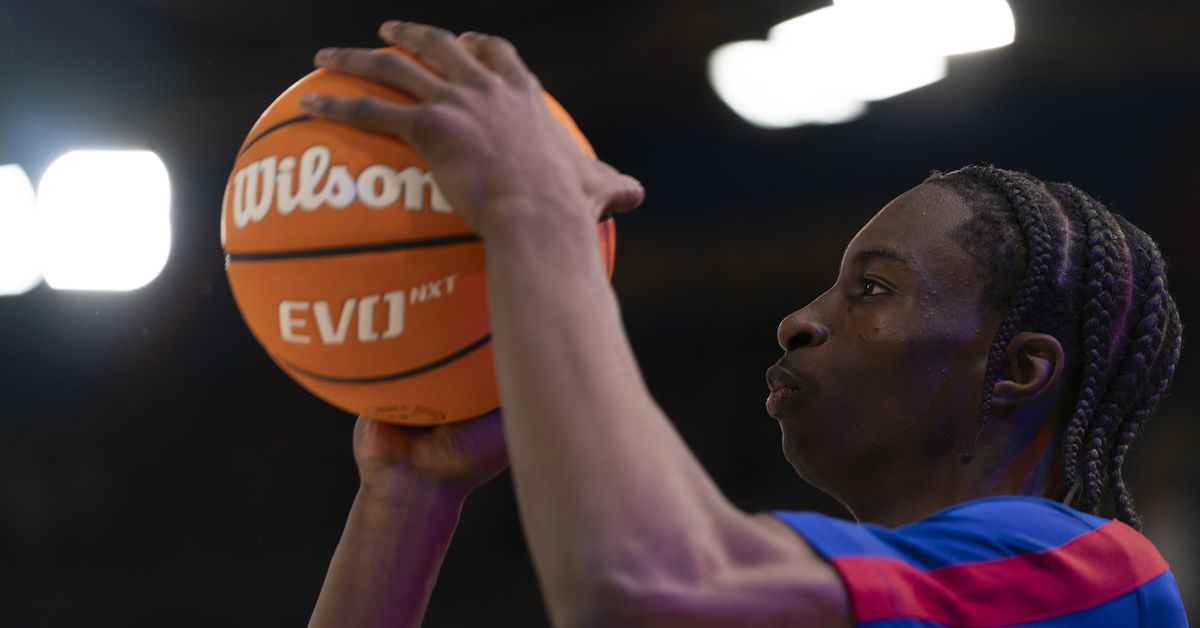
You guys probably recall the surprise when we all learned just how much Cooper Flagg made this past season at Duke, around $28 million.
He’s an outlier of course, but the trend is unmistakable: income is going up across the board.
That’s a bit of problem and not just for the NCAA. Turns out it’s causing a global…well, let’s call it a game drain.
What’s happening, in essence, is that NCAA players are suddenly making a lot more money than international players, and the employers of said international players don’t like it one bit.
Philippe Ausseur, the President of France’s National Basketball League, calls it looting, saying this:
“Given the number of players approached, about fifteen of whom have signed up, we can call it looting. The colleges are casting their net wide, even in Pro B, and are dispossessing us of a certain number of our key players without us being able to react.
“What took us by surprise were the amounts. We were expecting big contracts worth $350,000, but it’s $2 million…We were expecting half a dozen players to be approached, but it’s more than triple that…We’ve heard of agents trying to get clubs to sign certificates to demonstrate that their players are still amateurs. The situation remains unclear.”
Well first of all, looting seems like a very Gallic response to competition. Secondly, they didn’t complain when sub-NBA American players left college ball for European paychecks.
All that said, he does have a point: in a very short period of time, the NCAA has emerged as the second-best league in the world, the money keeps getting better and there are some real perks: you can get an education if you want, you get access to first-class coaching, facilities, training, nutrition and equipment. And you’re on TV all the time and thus on the NBA’s radar.
And while this appears to be less of a problem than it was in recent years, at least in Europe, there was a time when players spent way too much time trying to get paid. This has apparently been a problem for American players in China too. It’s less likely to be the case for NCAA players, which could also be a factor.
NIL
Table the expansion talk. The College Football Playoff should stay at 12 teams
Another day, another college commissioners’ meeting — and another conversation about potential College Football Playoff expansion that has ended without resolution. Or, as I like to put it, just your typical Wednesday in June. “Pretty much everything’s on the table and they’re taking a good look at all of it,” CFP executive director Rich Clark […]
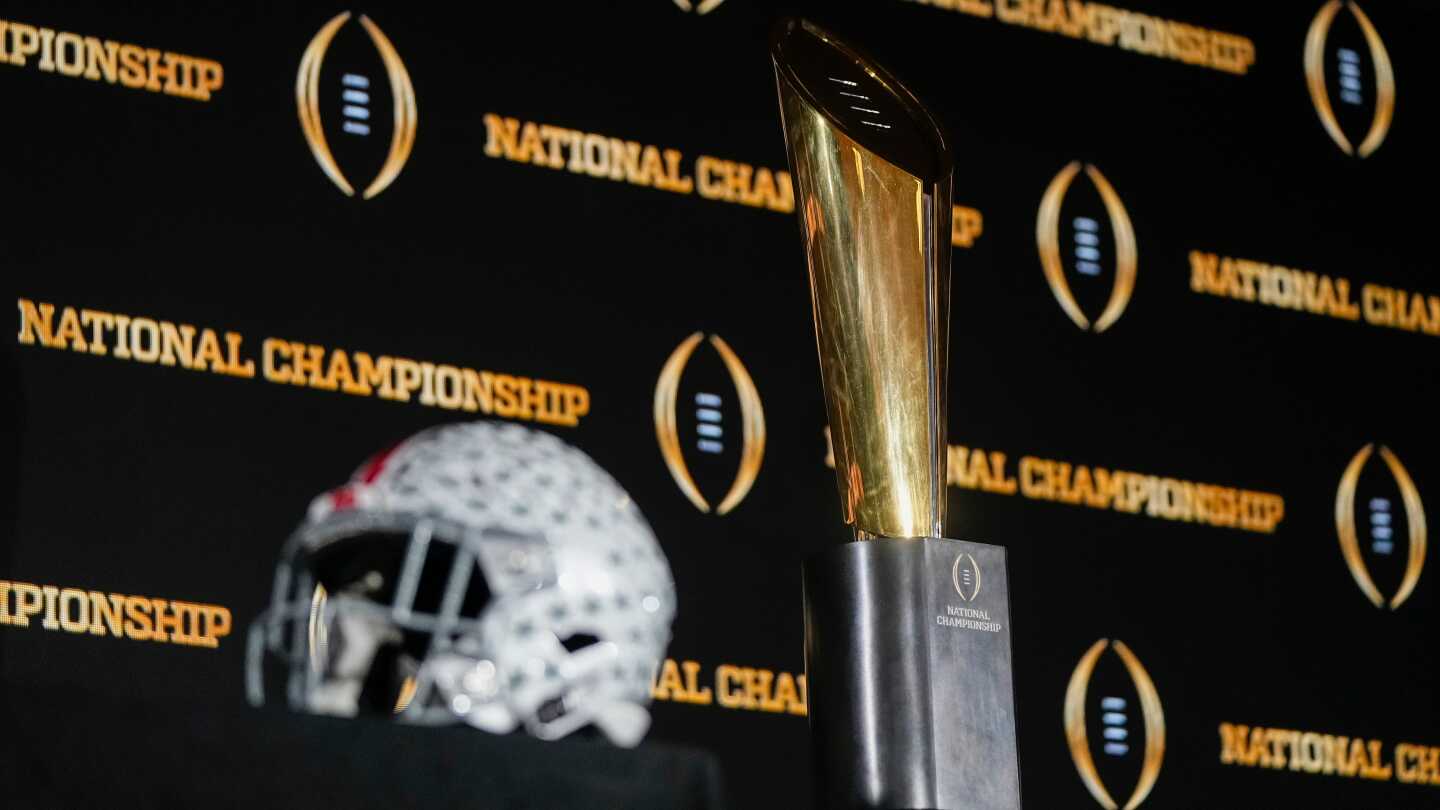
Another day, another college commissioners’ meeting — and another conversation about potential College Football Playoff expansion that has ended without resolution. Or, as I like to put it, just your typical Wednesday in June.
“Pretty much everything’s on the table and they’re taking a good look at all of it,” CFP executive director Rich Clark told reporters in Asheville, N.C. “So I wouldn’t say there’s a leading contender right now for them, but they’re taking a fresh look at it.”
Round and round we go on a topic that never seems to go away completely. Even though there’s an easy (if boring) solution: The CFP should stay as is — at 12 teams.
Now, I get why there’s always at least one loud voice clamoring to expand the field. College football is a sport that has crowned its champion by polls and by computer algorithm. There’s always been incredible interest in a playoff model, even when college football didn’t have one. Then we got a four-team bracket, approved in 2012 and implemented in time for the 2014 season. Just one year into the 12-team era, commissioners now demand further expansion.
Will Hunter play both offense and defense in NFL?
Lawrence Jackson Jr. discusses recent comments made by Jaguars general manager James Gladstone about Travis Hunter, sharing why the 22-year-old rookie will likely be a productive fantasy football wide receiver in 2025.
The Big Ten has pushed for a 16-team bracket with multiple automatic qualifiers (AQs) per league, with the Big Ten and SEC each nabbing four designated spots — the so-called 4-4-2-2-1 model, which grants them double the number of AQs of the ACC and Big 12 with one spot designated for the highest-ranked Group of 5 champion. The SEC stunned those in Big Ten circles with its coaches publicly pushing for a 5+11 model — one AQ per league and the Group of 5, with 11 at-large spots — at its spring meetings last month.
The SEC’s interest in the 5+11 model aligns well with what’s best for both the ACC and Big 12, two leagues that did not want to accept a model that essentially defined them as second-tier conferences.
The posturing and preening over the past month has left the sport in a messy spot. It’s also uncharted territory, because any format changes made for the 2026-27 season do not require unanimity. Changes do require the Big Ten and SEC to agree on them, though, and the relationship between the two is in a far more tenuous place than it was six weeks ago. Multiple sources in the Big Ten have told NBC Sports that the conference will not support the 5+11 model if the SEC remains at eight conference games. (The Big Ten plays nine.)
As the CFP expansion debate stretches further into the doldrums of the summer, even the Big Ten’s coaches are jumping into the fray.
https://x.com/NicoleAuerbach/status/1935104742679519328
It is quite possible that the current Big Ten-SEC standoff delays or stymies bracket expansion. Any format changes for the 2026-27 season need to be decided on and communicated to ESPN by Dec. 1.
But if the Big Ten and SEC can’t come to an agreement on a specific 16-team format by that date, the expectation is that the Playoff would simply move forward in its current iteration — with 12 total teams, including five conference champions and seven at-large selections.
And, frankly, that is the best possible outcome.
The 12-team CFP worked out exceptionally well in its first year. More teams had access to the sport’s premier postseason than ever before, which meant dozens of teams that previously would have been eliminated were still fighting for spots in the final weeks of the regular season. Increased access led to increased engagement by fans. First-round games on campus were as electric as we had hoped they would be. Even early round blowouts turned out to be a blessing in disguise, as they set up some great quarterfinal games and excellent, evenly matched semifinals.
Will NIL lead to players becoming ‘commodities’?
Dan Le Batard and the Shipping Container lay out some of the further-reaching effects of NIL at the college sports level, examining how youth sports can be affected and players risk being turned into ‘commodities’.
Even with just one season’s worth of data, it’s clear that there aren’t actually going to be 12 teams truly capable of winning a national title, that there are perhaps only six to eight built to get to the finish line. But it is obvious, too, that the very best teams in college football will fall within the 12 teams picked to participate year in and year out. Teams No. 13 or 14, on the wrong side of the cut line, were flawed teams that had lost to lesser opponents multiple times. The first team out of any field will always complain, but that exclusion felt far different from the Bowl Championship System era or even the four-team bracket days. In the past, we all worried that the best team in the country might not have a chance to play for a national championship. That’s no longer a fear in a 12-team world, because the buffer is so wide.
The only real problem with Year 1 of the 12-team CFP era was the way its convoluted seeding system worked — and that issue got fixed this offseason. Straight seeding 1-12 means a balanced bracket, and it also means that the four best teams (per the selection committee) are the four teams that get first-round byes. That is how the system should work, and it will give us more competitive, evenly matched early-round games.
The 12-team format worked well, and it’s going to work even better with straight seeding. But this sport’s leaders are impatient; they started discussing expanding beyond 12 teams before a single CFP game was played last winter. They assume bigger is better just because. Their bloated leagues need more access points, so they like the idea of 16 more than they do 12, even if the status quo is a pretty great solution to the problems that have ailed college football. The current format is fundamentally fair, and it will help the sport continue to evolve from its regional roots to its status as a national behemoth.
Ultimately, the Big Ten and SEC will surely figure out a way to work together again. The current standstill may just be a momentary (fortuitous?) blip. But while we’re here and while we’re paused, I hope the sport’s leaders take a second to look around. The grass isn’t always greener someplace else. Sometimes, it’s best to stay put.
NIL
Michigan introduces bill to ban reporting NIL deals to NCAA, stop schools from assisting in investigations
The newly approved House settlement has created fallout throughout the college sports world. Now, the state of Michigan has seen a bill introduced that would potentially target part of the agreement that revolves around reporting NIL deals with the NCAA and investigating those deals. House Bill No. 4643 was introduced by Reps. Tate, Herzberg, and […]
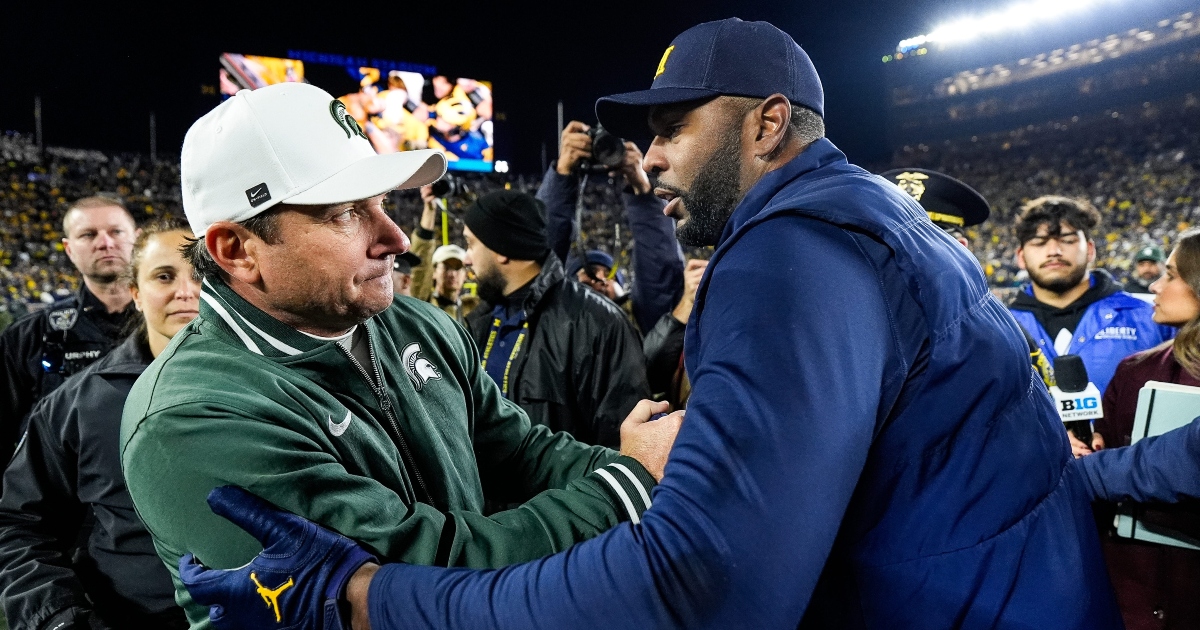
The newly approved House settlement has created fallout throughout the college sports world. Now, the state of Michigan has seen a bill introduced that would potentially target part of the agreement that revolves around reporting NIL deals with the NCAA and investigating those deals.
House Bill No. 4643 was introduced by Reps. Tate, Herzberg, and Rheingans last week. In it, the bill would completely ban reporting deals to the NCAA. On top of that, it would also prohibit schools from assisting in any investigation and ban athletic associations from penalizing athletes or schools for non-compliance.
While the House settlement was largely known as the settlement that would allow for revenue sharing, there’s more to it than just that. Among the other agreements in it to try and shape the future of college athletics was that NIL deals above $600 will need third-party approval. To do that, those deals are going to be sent to a new clearinghouse called NIL Go. Deloitte is set to oversee the fair compensation ranges for that.
From there, the House settlement also established a new enforcement agency called the College Sports Commission. It would be their job to handle those investigations into improper deals done outside the system that the settlement is seeking to establish.
Both the third-party approval and the new enforcement agency would be directly affected by this bill if it were to be passed and signed into law. This comes in a state with five FBS programs. That includes two Big Ten schools, Michigan and Michigan State. The Wolverines, of course, have won a national championship as recently as the 2023 season.
Notably, earlier in the year, the ACC, Big 12, Big Ten, and SEC each presented their member institutions with affiliation agreements. That would prevent universities from using state laws to violate the new enforcement rules. The price for not signing on to those affiliation agreements could be steep as well. In essence, a school risks the loss of conference membership and participation against other power league programs. It’s a tactic those conference administrators have used to, hopefully, enforce the House settlement regardless of laws.
Michigan bill shares similarities with similar bill in Tennessee
In May, Tennessee Gov. Bill Lee signed S.B. 536 into law. Considered by many to be a very athlete-friendly law, it shares some unique similarities with the one that is being brought forward by representatives in Michigan.
In it, the law states that Tennessee schools will be able to receive dollars from collectives unless told otherwise by federal law, a valid court order or antitrust laws. On top of that, it made it so the NCAA can’t create anticompetitive restrictions. Furthermore, that law sought to protect schools from any potential further legal disputes.
That amounts to, like the bill in Michigan, a pushback on the House settlement. In particular, they both appear to prohibit all of the House settlement’s limits on NIL compensation. On top of that, they both create protections for schools from investigators.
What comes next in Michigan remains to be seen. The bill will need to be passed and signed into law before the fallout can be entirely felt. It also remains to be seen if other states are going to follow suit with similar laws.
NIL
International big men who withdrew from NBA Draft present another opportunity for Indiana – The Daily Hoosier
With the addition of Serbian guard Aleksa Ristic this week, Indiana showed us they aren’t finished building the 2025-26 roster, and they aren’t opposed to going the international route to add missing pieces. At his most recent public appearance in late May, head coach Darian DeVries acknowledged his team was undersized at the five and […]
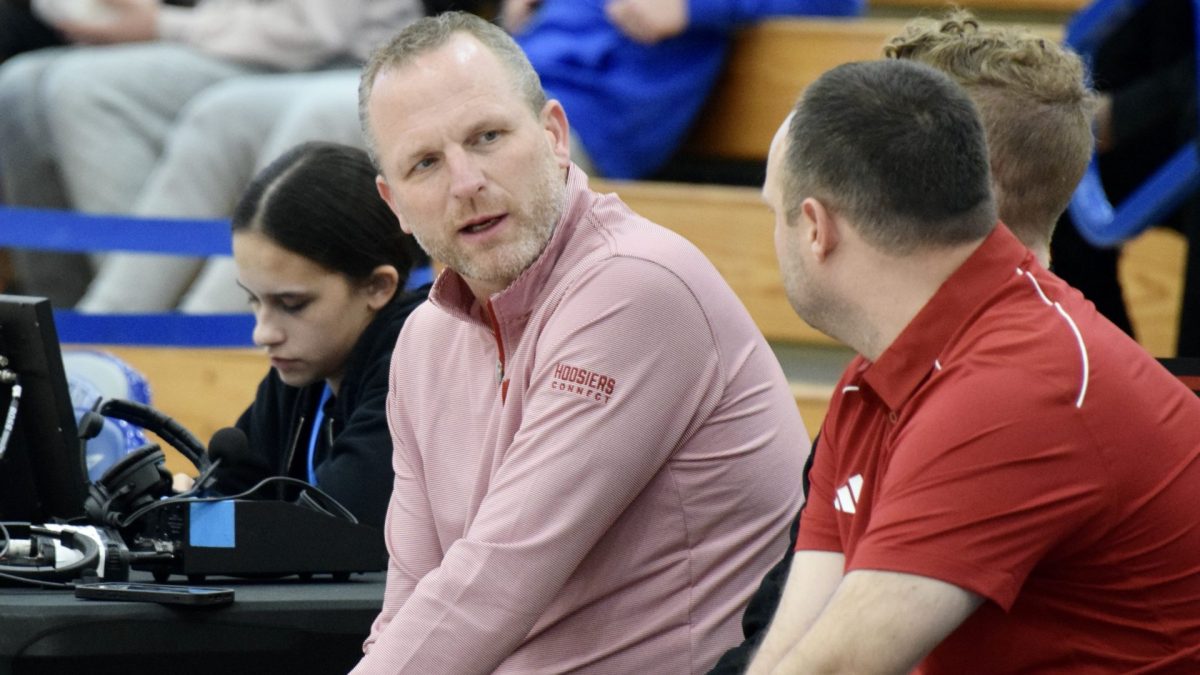
With the addition of Serbian guard Aleksa Ristic this week, Indiana showed us they aren’t finished building the 2025-26 roster, and they aren’t opposed to going the international route to add missing pieces.
At his most recent public appearance in late May, head coach Darian DeVries acknowledged his team was undersized at the five and would likely have suboptimal rim protection as a result.
But he also said his staff was still recruiting.
Since then there have been at least two recent international big men who both withdrew from the NBA Draft and have expressed interest in the NCAA route.
While the extent of any mutual interest is unclear, they are with a mention.
Senegalese center Momo Faye immediately became one of the more intriguing prospects when he took his name out of the draft. The 6-foot-10 Faye was recently measured and has a 7-foot-4 wingspan.
Faye averaged nine points, 6.8 rebounds and 1.5 blocks on 65.3% shooting from the field in 47 games with Reggio Emilia in the Italian League last season.
Jonathan Givony of ESPN said recently the 20-year-old Faye is evaluating both his international and NCAA options.
Paul Mbiya clearly has some degree of interest in college basketball, having already signed with North Carolina State. But on Wednesday Mbiya asked out of his agreement at that school.
The 6-foot-11, 260-pound Mbiya committed and signed with the Wolfpack last month after he dominated with ASVEL in the France-ProA U21 league this past season. He averaged 15.5 points with 11.6 rebounds, 3.1 blocks and 1.1 steals in 32.5 minutes a game across 23 contests.
Mbiya has been reported to have a 7-foot-7 wingspan.
In need of length and rim protection, Indiana no doubt has awareness of both Faye and Mbiya, and an intriguing opportunity exists in Bloomington should they choose to aggressively pursue either player.
With revenue sharing and NIL, college programs are now in effect competing with international clubs for talent. And the trend of young talented foreign players coming to U.S. colleges is rapidly expanding.
FIBA is now pushing for a mandatory Letter of Clearance for international players transferring to the NCAA, arguing that U.S. colleges now operate like professional clubs and should fairly compensate the European system that developed these young athletes. But for now the trend is only growing.
There are other prominent international big men who withdrew from the NBA Draft like 6-foot-10 Bassala Bagayoko, who plays in Spain, and 6-foot-11 Lazar Gacic, who plays in Serbia. To this point there hasn’t been any public reporting of either of them having interest in the NCAA route. But with attractive opportunities in U.S. college basketball, one can never be sure.
Related
NIL
Boston College's Apparel Deal With New Balance Celebrates Significant Moment
KC Smurthwaite is a consultant for Athletics Admin, specializing in revenue generation, licensing, marketing, and higher education. He has almost two decades of experience in collegiate athletics and the sports and entertainment industry. Smurthwaite is a fractional employee of several athletic departments across the country. He also teaches sports management and journalism as an adjunct […]
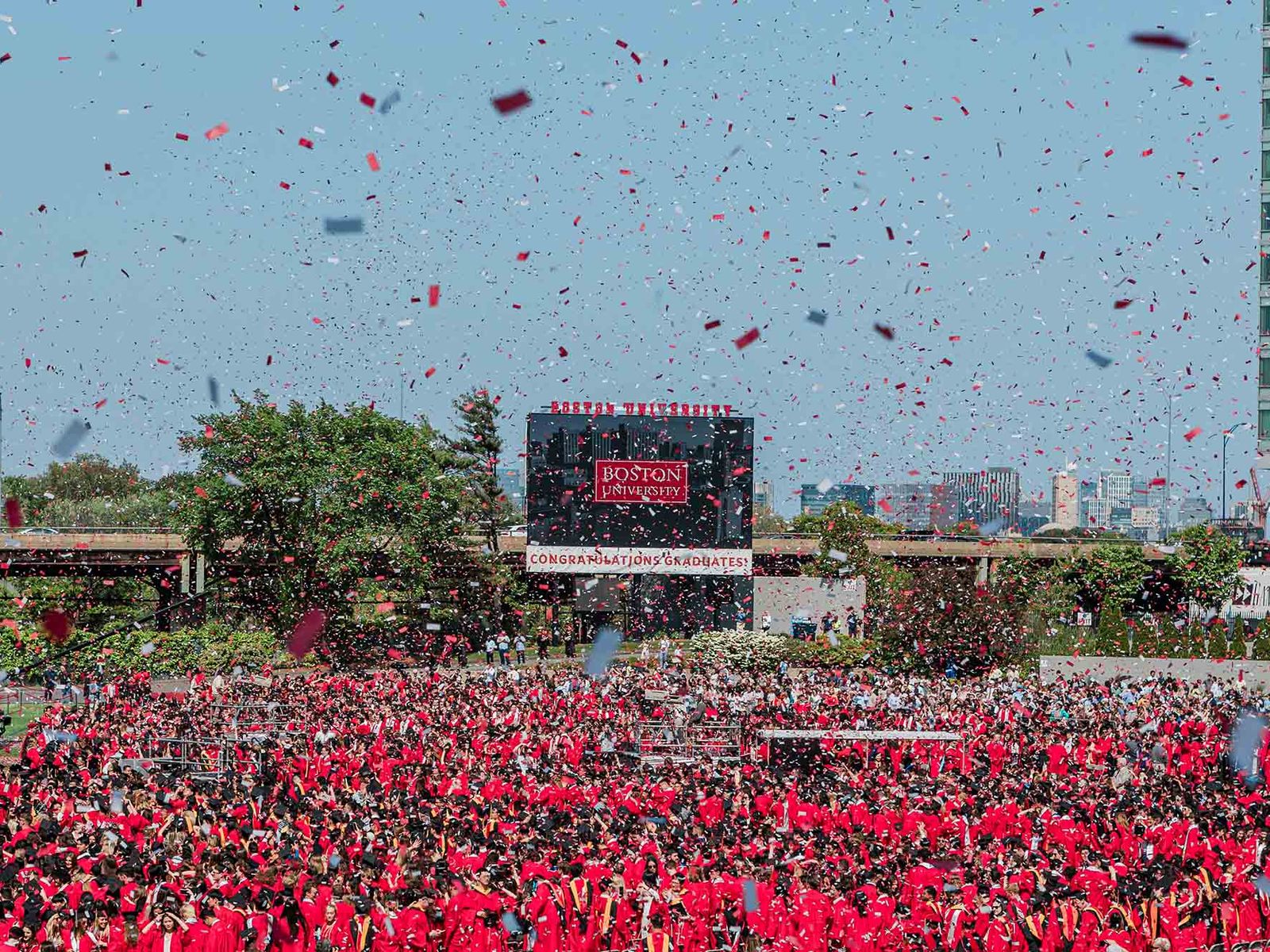
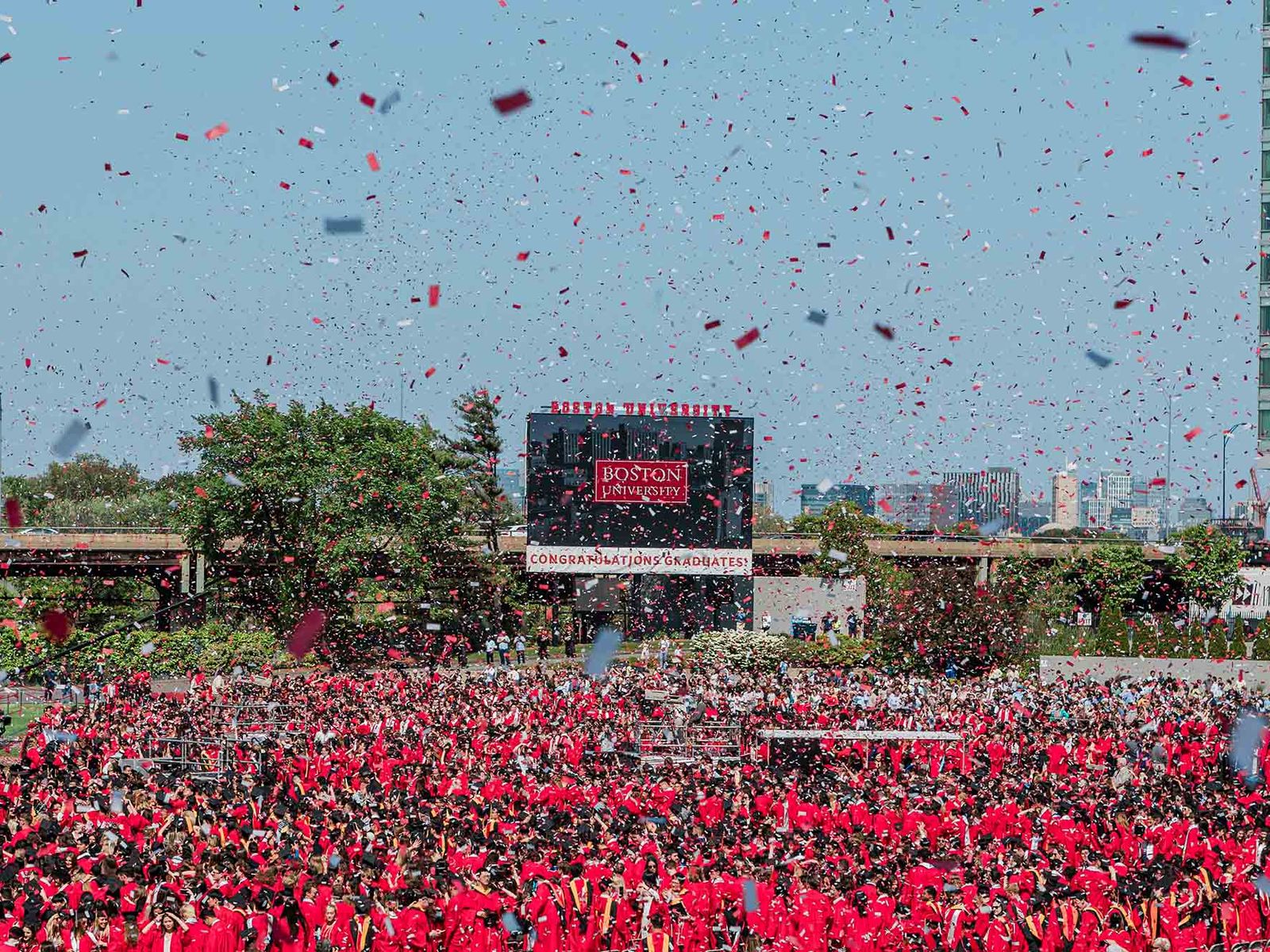
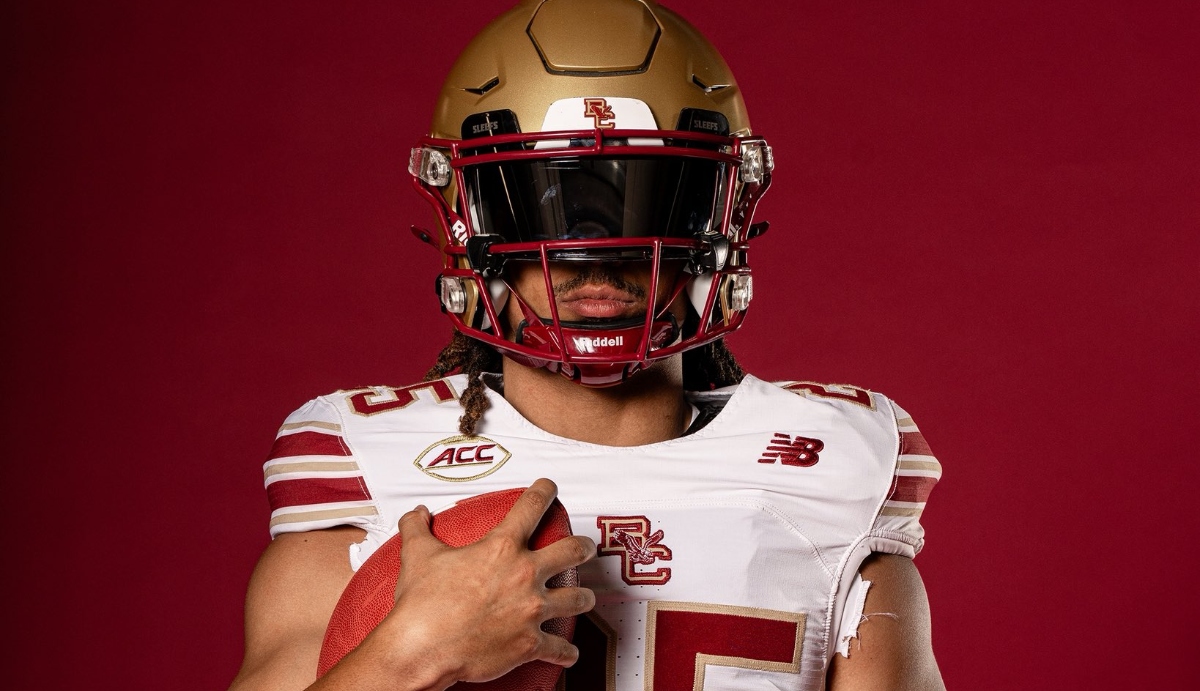
KC Smurthwaite is a consultant for Athletics Admin, specializing in revenue generation, licensing, marketing, and higher education. He has almost two decades of experience in collegiate athletics and the sports and entertainment industry. Smurthwaite is a fractional employee of several athletic departments across the country. He also teaches sports management and journalism as an adjunct professor. Follow him on Twitter or connect on LinkedIn. Smurthwaite can also be reached at [email protected].
In a world of swooshes, stripes, and shrinking commitments, New Balance is quietly — but confidently — rewriting the playbook. That playbook is expanding quickly, too.
On June 18, the Boston-based brand celebrated a significant moment in its evolution with a football re-launch party in its hometown. At the center of it all: Boston College. The Eagles’ new uniforms made their public debut, but what’s more symbolic is what they represent — a full-circle expansion of the New Balance and Boston College partnership that started in 2021 and now officially includes football.
Via the official press release from earlier this month: “Boston College is thrilled to grow in its relationship with New Balance,” said Blake James, the William V. Campbell Director of Athletics. “Since 2021, BC has been proud to align with New Balance — a Boston-based company that is a premium, world-class athletic brand. Serving as their flagship school in the collegiate athletics space, New Balance has demonstrated their commitment to Boston College by providing significant resources and the highest quality product lines to all of our teams and student-athletes. Our local connection to New Balance’s global brand serves to strengthen the foundation of this relationship.”
With the addition of football beginning in the 2025 season, New Balance will outfit all 31 of BC’s varsity programs, making this the brand’s first full Power Conference department-wide deal. It also signals a new chapter in college athletics for a company that never really left … it just waited for the right moment.
“New Balance launched Team Sports 20 years ago,” said Mike Schenbeck, Senior Sales Manager at New Balance. “We’ve had collegiate affiliations with a multitude of institutions through the years. In the D1 space, we’ve had two Sweet 16 men’s basketball programs, several bowl game appearances, and a national championship in baseball. Maine has been our longest-standing partner for 12 years. BC is our first major conference all-school deal, with football now on board.”
While the brand’s public presence in the college space may have seemed quiet compared to its industry giants, it was never dormant. Strategic, deliberate, and values-driven — that’s how New Balance operates. They don’t just sign schools; they have been very strategic, per Schenbeck, who takes on a large role in relationship building with colleges and universities.
“We look for true partners, not just sponsorships,” Schenbeck added. “The schools we partner with need to align with our values — they become an extension of our brand. We white glove treat each program and develop deep relationships with administrators and equipment staffs.”
It’s that “boutique” approach, as they call it, that defines the New Balance difference.
If you’ve noticed a wave of rising athletes signing with New Balance, it’s no coincidence. From Shohei Ohtani to Tyrese Maxey, Coco Gauff to Marvin Harrison Jr., the company has rapidly expanded its athlete portfolio — but only with those who share the brand’s ethos.
“We don’t just look at who they are on the field, court, or track, but who they are as people,” Schenbeck explained. “Chris Davis and the Sports Marketing team have done an incredible job of identifying athletes who match our culture. It takes a special kind of athlete to be with New Balance.”
That same care is applied when entering new sports categories. The relaunch into American football was anything but rushed.
“Our entry into football was a four-year process,” Schenbeck said. “We’ve always focused on comfort and fit, and football is no different. Our wear-test program spans dozens of collegiate and high school partners. BC has been at the center of this, helping test everything from footwear to uniforms and practice gear.”
Over the past decade, the college athletics apparel market has undergone significant changes. Gone are the days of brands handing out oversized checks or massive promotional credit lines. Nike dominates professional sports and has gradually pulled back from college commitments. Adidas and Under Armour have both been restructured. Many schools are finding their so-called “cash deals” are more air quotes than actual dollars.
Enter New Balance
With major players stepping back, New Balance is stepping in — and they’re doing so with intention.
“We are committed to a brand-first approach,” Schenbeck said. “We want to be the best, not the biggest. But that means offering real value — not just a logo on a jersey, but a true partnership.”
It’s why schools across the country — especially those looking for more than just a standard vendor — may want to take a second look when their next apparel deal comes up.
“Mr. Davis told us 20 years ago when he started the team division that he built New Balance on consistent quality growth and working with people you enjoy,” Schenbeck said. “We operate daily with that as our focus. At the end of the day… we’re proud to do things the NB way.”
As Boston College takes the field in 2025 dressed head-to-toe in New Balance, it may mark a turning point. For the brand. For the school. And maybe for the industry.
Because in a space dominated by legacy labels, New Balance just might be the challenger brand collegiate athletics has been waiting for. So all in, your school might become the next member of the New Balance family.
NIL
Joey Aguilar Listed as Transfer Player That Could Swing Tennessee's Playoff Hopes
Tennessee Volunteers quarterback Joey Aguilar has been listed as the transfer portal addition that could swing the Volunteers’ College Football Playoff hopes. The Tennessee Volunteers are less than 75 days away from the beginning of their 2025 college football season and are heavily working to reach the College Football Playoff for the second time in […]
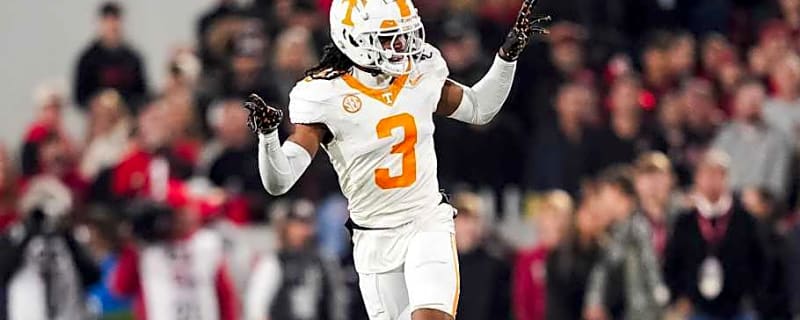

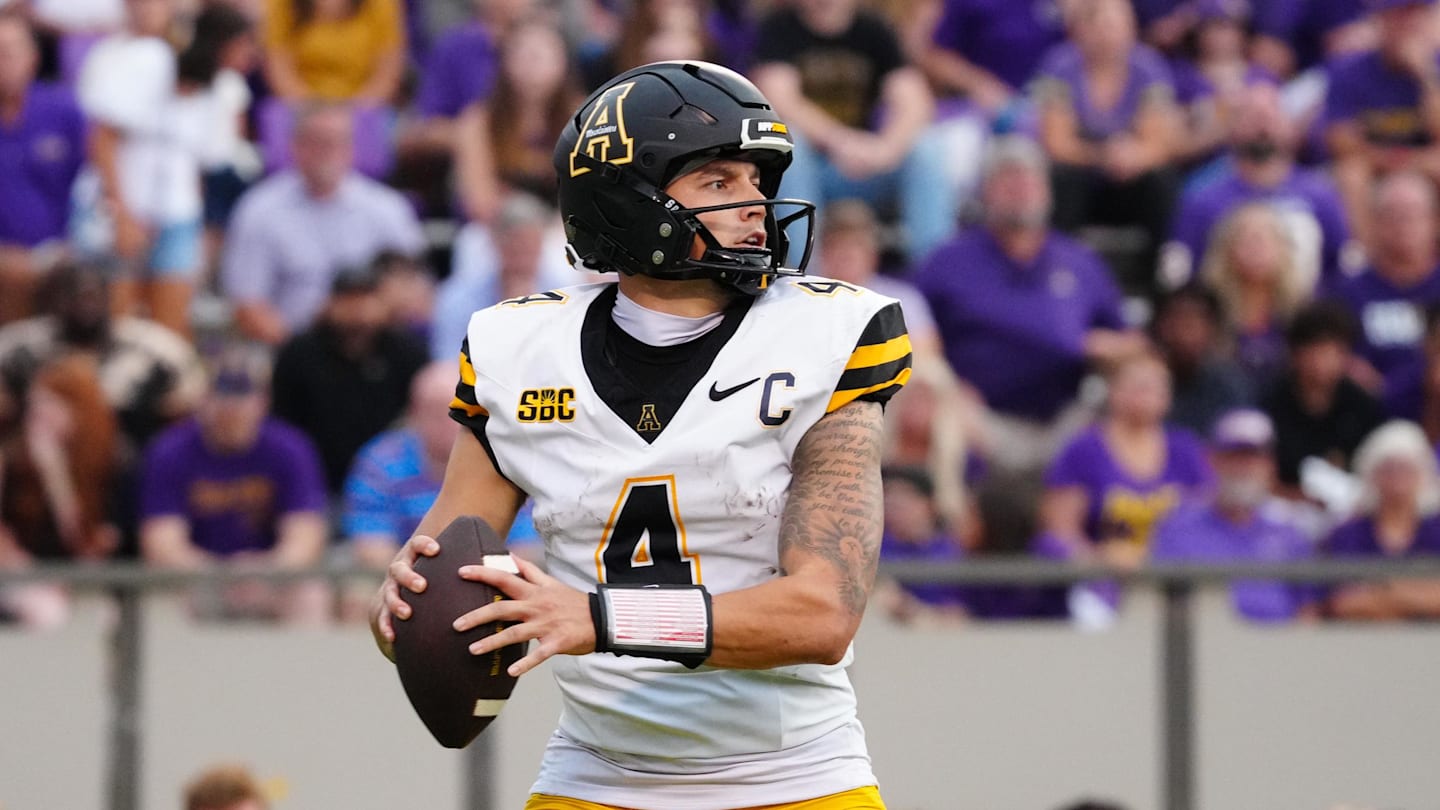
Tennessee Volunteers quarterback Joey Aguilar has been listed as the transfer portal addition that could swing the Volunteers’ College Football Playoff hopes.
The Tennessee Volunteers are less than 75 days away from the beginning of their 2025 college football season and are heavily working to reach the College Football Playoff for the second time in program history.
With so much roster turbulence in the modern age of college football, the Vols will likely depend on transfer portal acquisitions more than ever before ahead of their 2025 campaign. However, one portal addition in particular has been listed as a potential difference-maker for the Volunteers.
According to CBS Sports, quarterback Joey Aguilar is a player from the transfer portal who can swing Tennessee’s playoff hopes in 2025. The quarterback is expected to be the Vols starting signal caller come the first game of the season.
“Tennessee’s floor for quarterback play is high thanks to Josh Heupel’s system.” Wrote CBS Sports’ Chris Hummer. “But there are more questions about Tennessee’s offense than there have been in recent seasons.”
Aguilar joined the Volunteers roster during the spring portal window as a result of the dramatic and closely followed departure of Nico Iamaleava. Before joining the Vols, the quarterback spent two seasons at App State, where he accounted for 6,700 passing yards and 56 touchdowns.
Whether or not Aguilar can replicate his passing success with his new team will likely be a large reason the Volunteers do or do not reach the College Football Playoff this season. The Volunteers will begin their 2025 season in Atlanta against the Syracuse Orange on August 30th.
Follow Our Staff:
Follow Our Website
Make sure to follow our website Tennessee on SI.
OTHER TENNESSEE NEWS
-

 High School Sports2 weeks ago
High School Sports2 weeks agoParents Speak Out As Trans Pitcher Throws Shutout In MN State Quarterfinals
-

 Professional Sports2 weeks ago
Professional Sports2 weeks ago'I asked Anderson privately'… UFC legend retells secret sparring session between Jon Jones …
-

 College Sports3 weeks ago
College Sports3 weeks agoIU basketball recruiting
-

 Health2 weeks ago
Health2 weeks agoOregon track star wages legal battle against trans athlete policy after medal ceremony protest
-

 Professional Sports2 weeks ago
Professional Sports2 weeks agoUFC 316 star storms out of Media Day when asked about bitter feud with Rampage Jackson
-

 High School Sports3 weeks ago
High School Sports3 weeks agoThe Arizona Daily Star's top high school athletes, coaches and moments of the 2024
-

 NIL3 weeks ago
NIL3 weeks agoNCAA Sends Clear Message About Athlete Pay and Roster Limits
-

 Rec Sports2 weeks ago
Rec Sports2 weeks ago2x NBA All-Star Reacts to Viral LeBron James Statement
-

 NIL2 weeks ago
NIL2 weeks agoMen's college basketball Top 25 reset
-

 Social Media2 weeks ago
Social Media2 weeks agoControversial Athletics Gender Dispute Goes Viral After Riley Gaines Lashes Over Authorities































